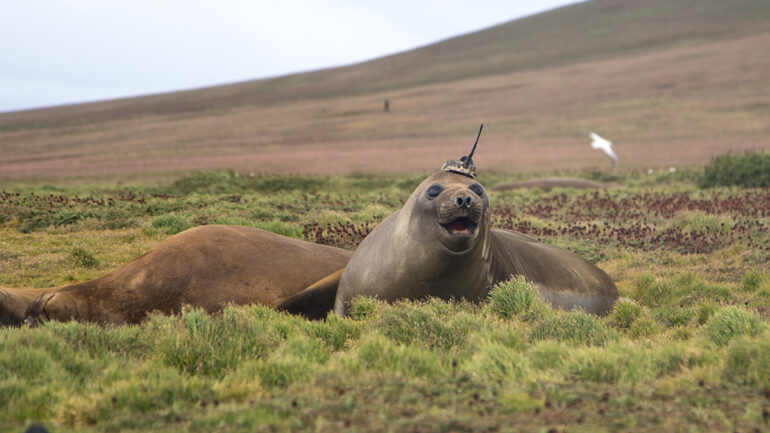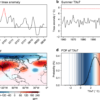Ice shelves surrounding Antarctica have been melting with increasing speed in recent years. Much of this melting happens from below, as warm water eats away at their bases. This warm water is moved around Antarctica by currents that remain only partially understood because of the continent’s vastness and remoteness. Mapping these currents in better detail will improve understanding of the future of the continent’s mantle of ice.
The 2013 Marine Mammals Exploring the Oceans Pole to Pole (MEOP) database relied on seals to carry temperature and salinity sensors into remote regions of West Antarctica’s Bellingshausen Sea.
Flexas and others combined data from this initiative with 2020 data from an autonomous undersea glider to take a better look at the hydrographic properties of the region, including temperature, salinity, and dissolved oxygen levels. The study is published in the Journal of Geophysical Research: Oceans.
They learned that meltwater flowing out of the Bellingshausen Sea—a relatively understudied body of water west of the Antarctic Peninsula—has a strong effect on ice shelves throughout West Antarctica. They also uncovered a seafloor trough they named Seal Trough for the instrument-laden pinnipeds that helped discover it.
The researchers found two distinct sources of meltwater moving through the sea, one from the Venable Ice Shelf flowing through Belgica Trough and the other from the Abbot Ice Shelf farther west flowing through Seal Trough.
Both flows contribute to the Antarctic Coastal Current (AACC) and may also affect ice shelves in other regions of Antarctica. Data also indicated that both the Bellingshausen Sea and the AACC extend farther west than previously realized, with the sea extending to Seal Trough and the AACC reaching into the Amundsen Sea.
Future work could more deeply probe the contributions of ice shelf water to the Bellingshausen Sea, the authors say, and should be updated with synchronous data on water flows, given the seven-year disparity between their current data sets.
More information:
M. Mar Flexas et al, Pathways of Inter‐Basin Exchange From the Bellingshausen Sea to the Amundsen Sea, Journal of Geophysical Research: Oceans (2024). DOI: 10.1029/2023JC020080
Provided by
American Geophysical Union
This story is republished courtesy of Eos, hosted by the American Geophysical Union. Read the original story here.
Citation:
Seals help scientists make discoveries in Antarctica’s Bellingshausen sea (2024, June 5)



